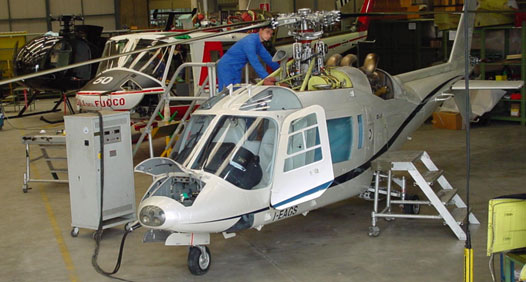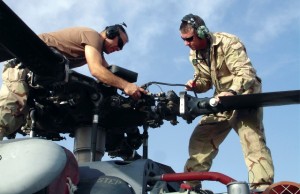

Helicopter OEMs Modernize Maintenance by Paul Pitts | The JetAv Blog.
In any helicopter operation, aircraft availability is so important that it is imperative that operators are able to maintain their aircraft in a safe and efficient manner. Helicopter maintenance is expensive, so the ability to develop an inspection schedule that will substantially reduce direct maintenance costs has become a priority among helicopter OEMs. The Bell Helicopter 429 and the Eurocopter EC 175 programs have led the charge by using the MSG-3 process to develop their maintenance programs.
So what is MSG-3? Forty years ago as the commercial airline industry grew it soon discovered maintenance downtime and cost was making it difficult to make any money. The Air Transport Association (ATA) then decided to create a “maintenance steering group” (MSG) task force whose mandate would be to analyze the current state of how maintenance was being performed and look for opportunities to increase aircraft availability and reduce maintenance costs, while not compromising safety. This process eventually led to the publishing of new procedures and milestones for maintaining aircraft in an efficient and logical manner assuring safe operation. MSG-3 introduced the reliability-centered maintenance (RCM) approach, a task-oriented program which uses a “top down” approach, by analyzing a system to determine failure modes which may cause a functional failure and develops maintenance tasks as necessary.
The Air Transport Association (ATA) then decided to create a “maintenance steering group” (MSG) task force whose mandate would be to analyze the current state of how maintenance was being performed and look for opportunities to increase aircraft availability and reduce maintenance costs, while not compromising safety. This process eventually led to the publishing of new procedures and milestones for maintaining aircraft in an efficient and logical manner assuring safe operation. MSG-3 introduced the reliability-centered maintenance (RCM) approach, a task-oriented program which uses a “top down” approach, by analyzing a system to determine failure modes which may cause a functional failure and develops maintenance tasks as necessary.
Availability and reliability important to any helicopter operation assuring profitability. During a MSG-3 analysis, a team consisting of the OEM, operators and the regulatory authorities analyzed every aircraft system, including airframe structure and wiring installation, to determine the failure modes, their criticality, the ease of their detection, the level of inspection required and the ideal recurrence of inspection. The team make-up is essential in this process as operational stakeholders use their experience in aircraft operations and engineers provided input as to system detailed functions. This integrated approach can design a program which will eliminate up to 30 percent less maintenance work hours compared to a maintenance program not using MSG-3 guidelines.
Bell Helicopter was the first OEM to use this method in the creation of the maintenance schedule for the Bell 429 helicopter. The major aviation authorities, Transport Canada, the Federal Aviation Administration (FAA) and the European Aviation Safety Agency (EASA) supported Bell in pioneering this approach. Eurocopter has now joined Bell in this pioneering approach to maintenance development by using the MSG-3 process to develop the maintenance schedule for the EC 175 helicopter.
A challenge in this process for the helicopter OEM is the MSG-3 standard was developed for fixed-wing aircraft. Clearly a standard methodology is required for the development of these maintenance programs for rotorcraft. Bell Helicopter, Eurocopter, Sikorsky and AgustaWestland are now working together to modify/adapt the existing MSG-3 process, and make it more rotorcraft friendly. The major civil aircraft certification organizations, Transport recommend that MSG-3 be used to develop the maintenance programs. So what is MSG-3 to us, the helicopter maintenance professionals? It is the new way that maintenance tasks are defined and how often they are anticipated to be performed. Maintenance determination for the twenty-first century is in the works now.
Premier Jet invites your feedback via the comment section below.
